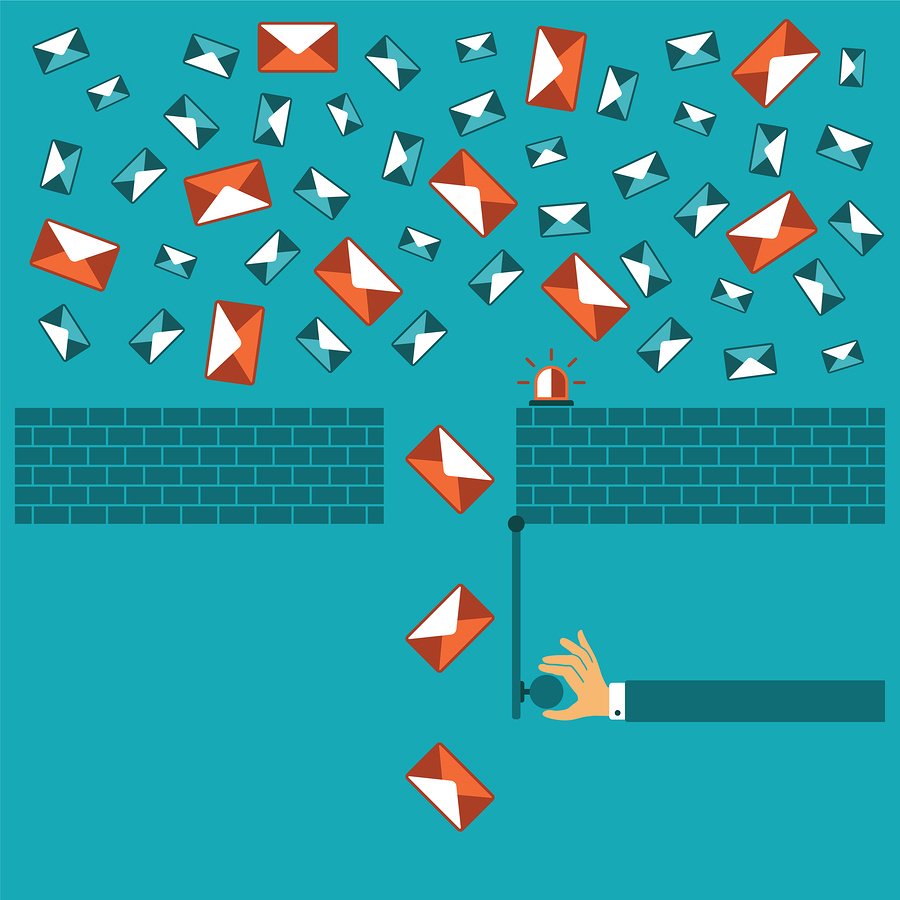 Spammers rely on catchy headlines and enticing offers to get users to click their emails. While not all spam messages contain malicious content, many do. Most email users are aware of the data security dangers of spam, but don’t give it much thought. Our email clients can generally detect most of it and automatically sweep it into the spam folder, to be automatically deleted every couple of days. However, not everything that goes in that folder is actually spam. And sometimes spam can get through. Here are a couple tips from PCWorld on how to deal with spam in a more proactive way.
Spammers rely on catchy headlines and enticing offers to get users to click their emails. While not all spam messages contain malicious content, many do. Most email users are aware of the data security dangers of spam, but don’t give it much thought. Our email clients can generally detect most of it and automatically sweep it into the spam folder, to be automatically deleted every couple of days. However, not everything that goes in that folder is actually spam. And sometimes spam can get through. Here are a couple tips from PCWorld on how to deal with spam in a more proactive way.
1. Train your filter
When you find spam in your inbox, don’t just delete it. Select it, and tell your mail client that this particular message is spam. How you do this depends on your client. For instance, if you’re using Gmail’s website, click the Report spam button in the toolbar (the icon looks like an exclamation point inside a stop sign).
You also need to train the client about your false positives. Once a day, go through your spam folder looking for messages that don’t belong there. When you find one, select it and tell the client that it made a mistake. In Gmail, you click the Not spam button.
If your mail client is halfway decent, it will learn from these mistakes…but only if you train it.
2. Never respond to spam
If you recognize something as spam before you open it, don’t open it. If you open it and then realize it’s spam, close it. Do not click a link or a button, or download a file, from a message that you even remotely suspect is spam.
If you opened a spam because it appeared to be coming from a friend or co-worker, contact them immediately and let them know that their account has been compromised.
3. Hide your email address
The more people who have your email address, the more spam you’re going to get. So keep your address close to your chest.
Don’t publish it on the web unless you absolutely have to. And if you have to, use a different address for that purpose.
Use disposable email addresses when you’re not comfortable sharing your real one.
4. Use a third-party anti-spam filter
Most of the major security suites come with an anti-spam filter that can augment the one on your client – but only if that client is local. In other words, they can work with Office’s Outlook program, but not with Outlook.com.
5. Change your email address
This is a very drastic option, but if you’ve responded to spam in the past or haven’t hidden your address, and are therefore overloaded with spam, it may be your best option.
Of course you’ll have to inform your legitimate contacts about the change, and you’ll probably have to keep both addresses for a few months. But once you can get rid of the old address, your spam count should plummet.
If these tips are too late and you’re already a victim of some malware downloads, call the tech experts at Great Lakes Computer to help.




